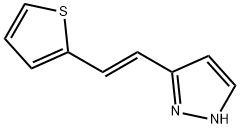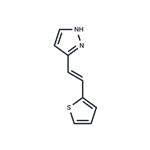Description
Terevalefim (ANG-3777) is a hepatocyte growth factor (HGF) mimetic that in preclinical and phase 2 studies has demonstrated the ability to activate the c-Met receptor and the pathways associated with that activation, improving renal function in induced-AKI in animals and long-term graft function occurring in renal transplantation recipients with signs of DGF[1-2].
Biological Functions
ANG-3777 (Terevalefim) is an HGF mimetic that in vitro induces the same c-Met cascades and cellular effects as endogenous HGF. In animals, ANG-3777 stimulates tubular repair and regeneration, resulting in improved renal function following ischemia reperfusion injury. In humans, ANG-3777 has been shown to improve renal function up to 1 year after kidney transplantation in patients with signs of delayed graft function[1].
in vitro
In vitro, ANG-3777 reduces apoptosis and increases cell proliferation, migration, morphogenesis, and angiogenesis in injured kidneys. In animal models, ANG-3777 mitigates the effects of renal damage secondary to ischemia reperfusion injury and nephrotoxic chemicals[1].
in vivo
In vivo, Terevalefim results in dimerization and phosphorylation, and thus activation of the c-Met receptor, followed by activation of c-Met signaling cascades. The presence of c-Met is needed for ANG-3777 activity, and ANG-3777 selectively phosphorylates c-Met. Furthermore, c-Met phosphorylation induced by ANG-3777 occurs in a dose- and time-dependent manner with selective phosphorylation of c-Met and its downstream effector of ERK. No phosphorylation of IFGR, Tie2, EGFR, or FGFR occurs[2].
References
[1] Ayad S, et al. Hepatocyte Growth Factor Mimetic ANG-3777 for Cardiac Surgery–Associated Acute Kidney Injury. Kidney International Reports, 2020; 5: 2325–2332.
[2] Vincenti F, et al. Phase 3 trial design of the hepatocyte growth factor mimetic ANG-3777 in renal transplant recipients with delayed graft function. Kidney International Reports, 2021; 6: 296-303.

